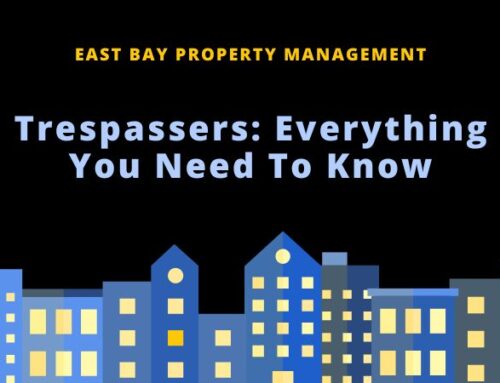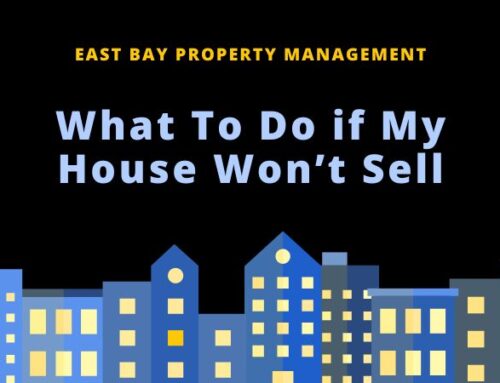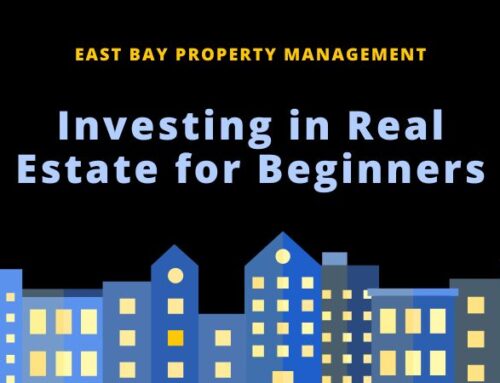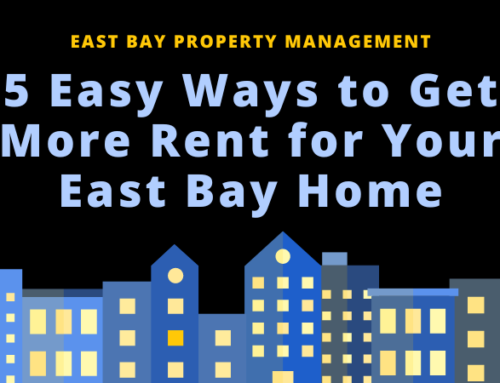At East Bay Property Management and Consulting, we’ve seen many California lease agreements through renting and managing hundreds of rental properties. We’ve seen the Apartment Owners Association lease, the California Association of Realtors lease, we‘ve seen lease agreements downloaded off the internet.
They all cover the basics: How much a month’s rent is, when and how the tenant must pay rent, the lease duration, et cetera. These are the basic things to include in a lease. In this article, what we’re going to talk about are some additional essentials that landlords must have in their lease before the monthly rent period begins.
If you’re wondering what California landlords must include in their California lease or rental agreement, keep these six things in mind.
Six Essentials for Your California Rental Agreement
#1. Clear Language
First and foremost, California landlords want to make sure their lease agreement is easy to read. This prevents any future conflicts between landlord and tenant. We break our California lease agreements down into 44 easy-to-read sections, and each section has to be initialed by the tenant moving in. In fact, every tenant over 18 needs to initial all 44 sections of the lease agreement.
This way, the landlord knows that the tenant has read the lease agreement, which eliminates any communication problems down the road with the landlord, where a tenant might say, “I did not know that was in the lease.” So, make sure that your lease agreement is clear and there are no questions left unanswered for your current and prospective tenants to ask you as a landlord. For example, make sure it is known how much is given as security deposit. If the details about the security deposit are not listed clearly, there may be confusion surrounding this security deposit. Since security deposits can sometimes cause miscommunication, it’s best to answer all security deposit questions and concerns in the lease.
For more information on security deposits and how to return security deposits, read our post here.
#2. Cover the Details on Repairs
California landlord must never forget to include this in the lease checklist.
The landlord must explain who covers what, whether it’s the landlord or tenant, when it comes to repairs in the lease. Section eight of our lease, for example, outlines what the landlord covers in terms of maintenance and repairs. This means things like a fence blowing down, an appliance going out, or a water heater leaking.
It also covers what the tenant is responsible for, such as ants, rodents, toilet clogs, and batteries in the smoke alarm. These are all covered in our leases, and they should be covered in yours for the rent period.

#3. Annual Property Inspections
In the lease agreement, the landlord will want to write an annual home inspection that as a landlord, you or your property manager can perform in California. Under California law, section 54 of the California tenant code states that a landlord can go into a tenant’s rental property for an emergency, a repair, or the last 30 days of the lease agreement if they’re showing a rental unit to a prospective tenant in California.
But when it comes to a property inspection, landlords need to write that into the lease. The home inspection is crucial: This is when you or the property manager will go into the home and check for any kind of deferred maintenance.
Landlords should look at the smoke alarms and the carbon monoxide alarm. Landlords should change the furnace filter, make sure the tenant hasn’t snuck in a pet or a roommate, and so on. It’s very important that landlords write an annual home inspection into the lease, to make sure tenants are following rent rules.
#4. Renter’s Insurance
No tenant can move into any one of our clients’ homes unless they show proof of tenant’s insurance. Tenant insurance is for the benefit of the tenant and landlord alike.
There are three parts to a tenant’s renter’s insurance:
- The first part covers a tenant’s personal property and belongings if they’re stolen.
- The second part covers physical accidents, such as if the tenant were to slip and fall in the home.
- Thirdly, it covers if a tenant were to start a fire in the kitchen or flood the bathroom. In these cases, they have covered their liability.
For owners, all we are really concerned with is that last part: The fire in the kitchen or the flood in the bathroom. We require that our tenants have a $100,000 minimum liability insurance policy that covers that kind of accident. That way, if one does occur, it goes through their insurance company and not yours. Otherwise, your rent rates would go up in California.

Additionally, in the California residential lease agreement, under the renter’s insurance clause, you want to include this clause: “Unless prohibited by law, resident waives any insurance, subrogation rights or claims against landlord/owner and their insurers.”
This clause simply states that if there is a claim that needs to be made to the tenant’s insurance company, the insurance company can’t come back and sue you. It’s very important that this clause is included in your lease agreement.
#5. Lease Renewal
All of our tenants are on a one-year rent lease agreement, and require a notice by the end. At the end of ten months with our tenant, we send them reasonable notice. The notice will say, “Your lease is expiring in 60 days. We’d like you to renew the lease for rent. However, if you’re not going to, we need to know 30 days in advance.”
This is also a time when we send them a rent increase notice, if one is necessary. Typically, if a tenant is going to vacate, we hear their notice about it within 30 days.
Sometimes, though, the tenant stays and does not renew the lease agreement because we send a renewal notice out a couple of weeks before the lease actually expires, and it’s not signed by the tenant.
So, we have a clause in our California lease agreement that states this information about receiving a notice or renewing the lease. It writes, “If we do not receive the lease renewal, nor do we receive a 30-day notice to vacate, your lease will expire and you will automatically go revert to month-to-month, and your rent will then automatically increase by 10% per month.”
See, it’s to our owner’s advantage (and to the advantage of the tenants who rent, actually) that we always have a one-year lease in place. It gives you peace of mind and security knowing that your home isn’t going to be vacated in a time like December, when it’s a little more difficult to rent.
So, we want our tenants on a year-to-year lease for rent. If they want the flexibility of a California month to month lease, though, they can have it. We understand current and prospective tenants might have a possible move coming up, or they might be interested in buying a house soon.
For this rent flexibility, they’re going to pay a premium of 10% on their rent payments, which gives our owners a little financial cushion if their tenant breaks the lease.

#6. Addendums
Finally, under California law, you want to include the proper addendums in your California lease agreement. With all of our lease agreements, we have an “information on bedbugs” addendum. It is a requirement as of January 1st, 2018, that every tenant in a residential property in California gets a bedbug addendum.
We also have our mold addendum, and we have our lead based paint addendum for homes built prior to 1978. We have our “damage versus wear and tear” addendum that has to be signed by the tenant. Lastly, we have our renter’s insurance addendum. You could include additional ones, such as a furnished rental property addendum, if you so choose.
Our California lease form and these addendums are all available for you as a landlord to download and use, if you’d like, on our website under the “Owner Resources” menu item on our home page.
As a rental property owner, if you’ve got any questions, contact us at 510-996-3238. Good luck!
We can help you understand California law, rental contract rules and anything relating to real estate!
Want more information about relevant laws, such as landlord-tenant laws? Head to our blog for posts all about landlord-tenant laws!





